A great way to engage students in the environment is to bring in the critters! Whether fuzzy or scaly, big or small, common or endangered, the wildlife in your area, whether there for all or part of the year, provide plenty of learning opportunities. Photos and other images are great, but a hands-on (or at least eyes-on) experience can leave a lasting impression.
Here’s how four educators used GreenWorks! grants and an array of PLT activities to connect their students to the natural world around them by creating habitat for all sorts of pollinators: birds, bees, butterflies and bats.
Creating Habitat in Minnesota
Students at Princeton Intermediate School in Minnesota learned the relationships between flora and fauna through the Migrating Bird, Pollinator, & Butterfly Ecosystem Project. They created a 4,000-square-foot garden of native plants. A few months later, they could video butterflies visiting their garden.
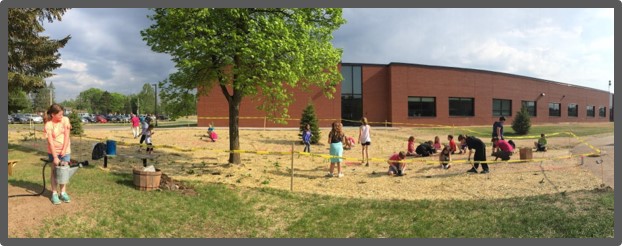
“Students planned and implemented the project from start to finish,” said teacher Becky Pollard. “They were in charge of researching which native plants would thrive. They also had to plan out planting details such as spacing, depth, and color coordination of plants. The work involved math, online research, team building, and planting and caring for the garden.”
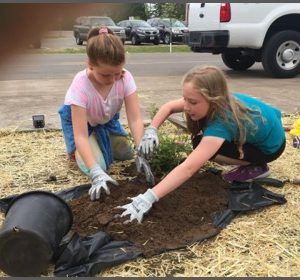 A community volunteer used his construction equipment to create the space. Members from the Sherburne Soil & Water Conservation Department and the Friends of Sherburne National Wildlife Refuge, along with teachers and parents, showed students how to plant and maintain the garden. Through the GreenWorks! grant and other donations, the garden also has bird houses and feeders, as well as picnic tables and benches.
A community volunteer used his construction equipment to create the space. Members from the Sherburne Soil & Water Conservation Department and the Friends of Sherburne National Wildlife Refuge, along with teachers and parents, showed students how to plant and maintain the garden. Through the GreenWorks! grant and other donations, the garden also has bird houses and feeders, as well as picnic tables and benches.
Drawing from the PLT PreK-8 Guide, Pollard and other teachers used Improve Your Place (Activity 96) and modified Adopt a Tree (21) to “adopt a plant.”
The project’s success had a lot to do with project management. Pollard stressed the importance of locating knowledgeable community members and coordinating the effort with school staff and fellow teachers. As one example: “The plants can’t sit around for days,” she said. “They need to get into the ground, so all other details need to be done by the time they arrive.”
She also stressed the need to plan for weeding, watering, and other ongoing maintenance. Drawing from Adopt a Tree, students “adopt” a plant—which also means dealing with the weeds that surround it.
A time-lapse video humorously shows the project in progress.
CREECS Saves the Bees in South Carolina
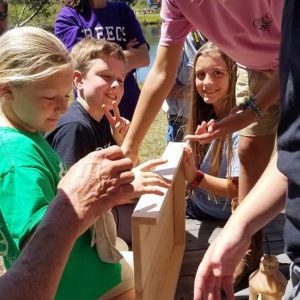
Cape Romain Environmental Education Charter School (CREECS) in McClellanville, South Carolina, has the advantage of doing many environmental activities every day. Fourth-grade students already had an observation hive in their classroom as part of Bee Cause, a national nonprofit honeybee project. “The students loved it, but the bees kept swarming and would not stay in the hive,” said teacher Allie Kreutzer. “They came up with the solution to build a hive closer to a real garden.”
The project involved building boxes and a frame for the bees, as well as enhancing an existing vegetable and pollinator garden, Kreutzer explained. The GreenWorks! grant also paid for protective equipment that she as a trained adult dons to maintain the apiary.
She emphasized the need to work with a partner, in their case Blue Pearl Farms, a local farm that maintains bees to enhance blueberry production. Students also went to the farm to better understand the ecosystem and the role of pollinators within it.
When asked about how to manage student contact with bees, she said, “We are fortunate we have no severe bee allergies. We talked a lot about staying calm around the hive, and how bees don’t want to sting you.” Talking to students beforehand, especially those who have preconceptions about bees and other pollinators, is critical.
To understand the importance of bees to pollination and to crops, Kreutzer drew from PLT activities How Plants Grow (41), Germinating Giants (66), Soil Stories (70), Have Seeds Will Travel (43), and Bursting Buds (65). “These lessons helped students understand the importance of bees to pollination and our crops.”
“The hardest part is maintaining the beehive once it’s full,” said Kreutzer. “It is important to have a local beekeeper willing to offer support and guidance along the way.”
Butterflies and Bees in Maine
PLT GreenWorks! grants are available in nonformal education settings, as shown through Homes for Our Endangered Pollinators, a project conducted by the First Church in Belfast, UCC.
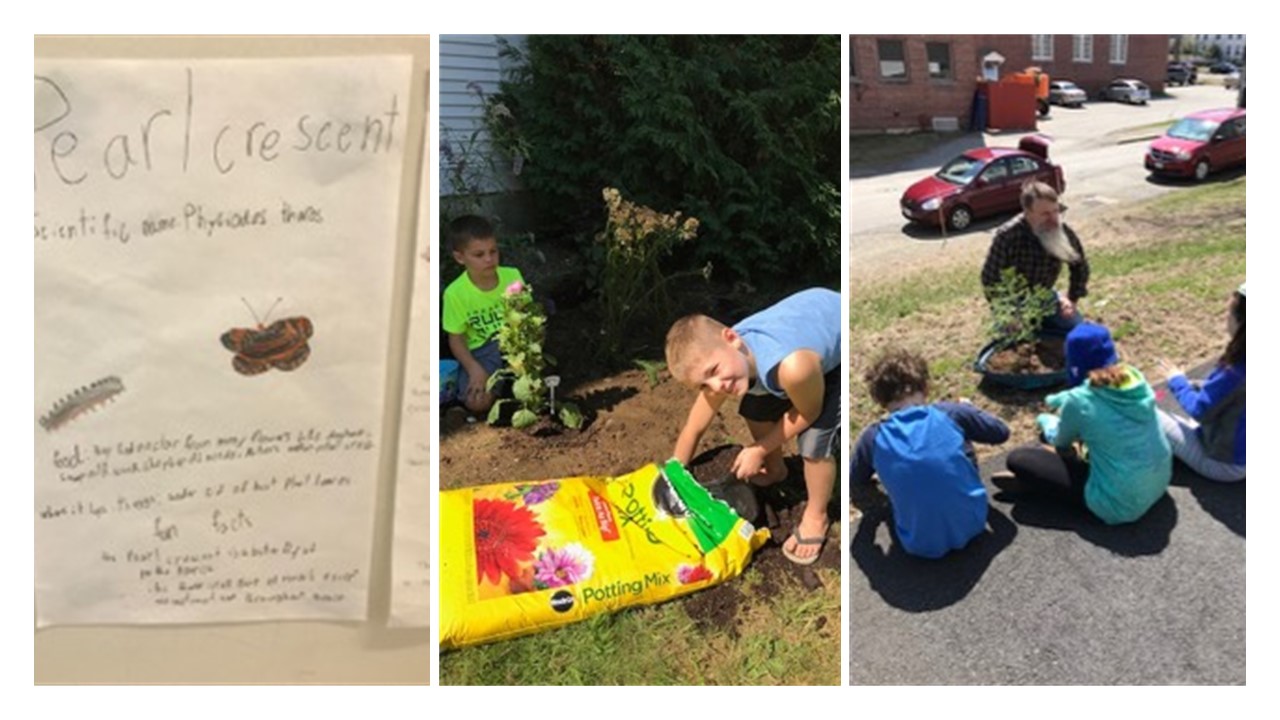
Coordinator Elizabeth Haynes explained that students divided into two teams to research pollinators and the plants they need for food and habitat. A local forester and master gardener provided practical information, then the teams prepared pollinator gardens based on their research.
Because the project was not a classroom activity, it had a few unique characteristics, according to Haynes. “The more challenging part was always finding activities that all students felt capable of completing since we had students who ranged from age 2 to age 15,” she said. One solution: “Anything that was hands-on proved to be very engaging with the children.”
Extending from the original GreenWorks! project, they are also using a greenhouse at Troy Howard Middle School in Belfast to grow milkwood seedlings.
PLT activities used included Peppermint Beetle (3), Invasive Species (12), Dynamic Duos (26), Are Vacant Lots Vacant? (47), Planting the Ideal Community (55), Tree Factory (63), and Soil Stories (70).
Haynes noted the importance of a flexible timeline, especially when dealing with fickle weather. “Be ready to adapt the outdoor activities to do them inside if the conditions are too harsh to be outside,” she suggested.
In addition, especially in this nonformal setting, she said, “Be willing to conduct your activity with whoever shows up. We had sessions with three or four students, but other times with 14 or more. We made sure to include all ages even if we had readers and nonreaders.”
Haynes observed something that extends across settings. “All children can learn and are eager when we are learning together about nature since they are curious about their environment.” She also recommended sending an email or otherwise communicating with parents so they could understand the project.
Going Batty in Wisconsin
From birds to bees to—okay, why not bats? Students at Shullsburg High School learned about bat habitat and then constructed 32 bat houses. As a follow-on, students are seeking to place the houses on the property of members of the community.
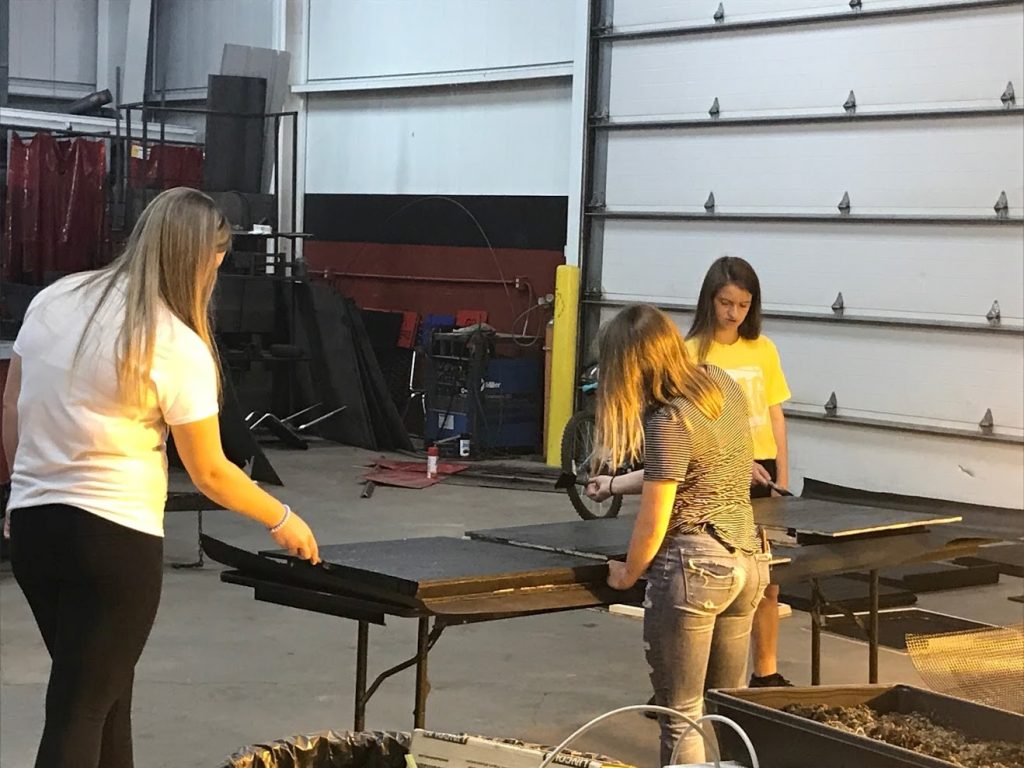
“The project was an incredible way to enhance student learning,” said teacher Jennifer Russell. “Bats are a topic that makes most people squeamish, but they are a critical part of the ecosystem. The building of the bat houses helped students to understand the habitat needs of the bats.”
Beyond the habitat aspects, “Students demonstrated leadership in the project by becoming team leaders,” she added. “There were lots of aspects of quality control in the project. Students took responsibility for making sure that the houses were painted and stained properly and constructed squarely. Students also worked to help each other out as the projects were built.
“As the project goes into the next phase, I am looking forward to student leadership in asking questions about bat health and monitoring,” she said.
The project connected with the Focus on Forests module for secondary students. “Understanding forests allows students to better understand the wildlife around us. The tie to forests also helps us understand why creating habitat for bats is important,” she said.
Russell’s main advice is to talk to as many community members as possible to find locations for the houses ahead of time. The construction took longer than expected, she said so students had less time before the semester ended to place the houses. Subsequent classes are building the houses as well as reaching out to the community to explain the importance of bat habitat.


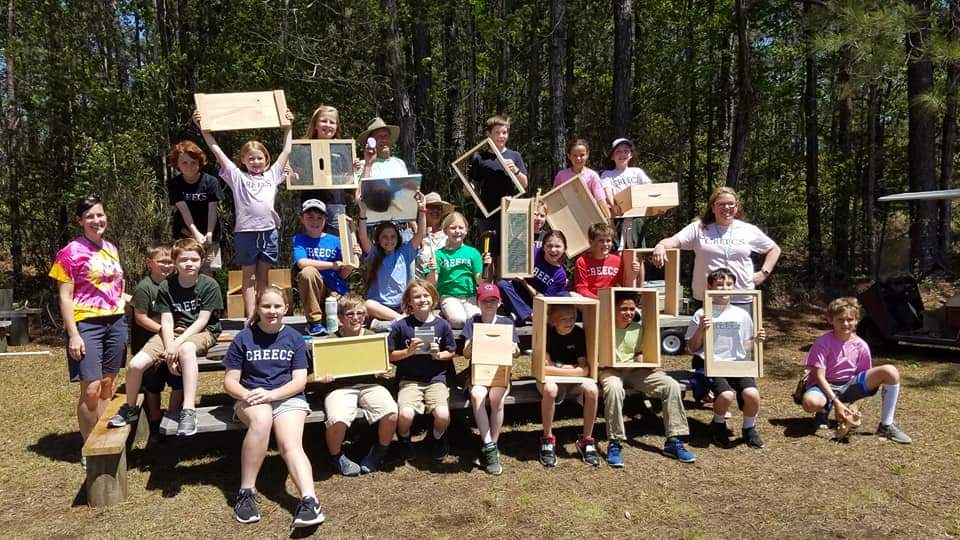

2 comments on “Birds, Bees, Butterflies, and Bats”
That’s an amazing eco-friendly project.
Amazing and inspiring!